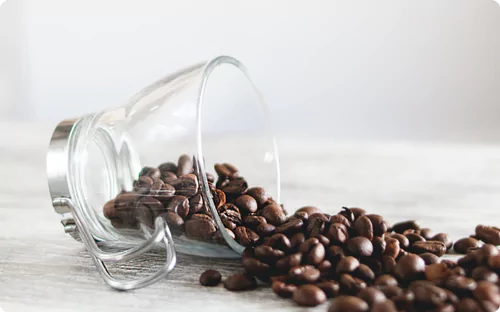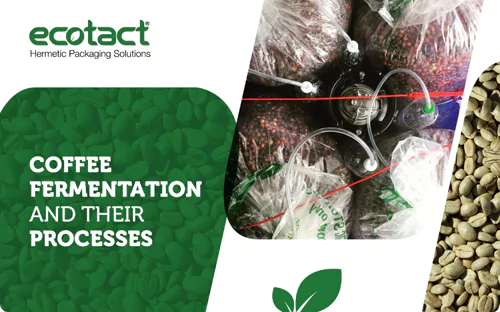In the heartland of Southeast Asia is a landlocked country - Laos. A hidden gem when it comes to coffee production, Laos grows delightful coffee beans that are completely unique in their flavors and aroma. As the specialty coffee industry is growing swiftly across the globe, it’s interesting how Laotian coffee beans are also gaining recognition within the industry.
History of Laos Coffee
The first few coffee plants were brought by French colonists in the 1900s (Bourbon and Typica). Because of its cold climate, they decided to plant coffee in the northern area of Laos first. Three different coffee varieties that were first grown were Arabica, Robusta, and Liberica by the French. Later, many French settlers had to leave these pioneer plantations right at the start of World War I seeing the global situation. Thus, the Laotian coffee industry failed due to the start of World War I at first and then World War II.
But pacing upwards henceforth, at a slow and steady growth rate, Laos found its foot in the coffee world. It’s noteworthy that today Laotian coffee beans have gained such popularity that they are exported across various continents. In fact, at present coffee is Laos' second most important export after cassava employing about 40,000 families.
One thing that changed the coffee scenario was Laos’ single-origin coffee. This exceptional coffee has started to gain popularity and command greater prices globally. It was additionally difficult to resist the changeover because small-scale farmers could gain financially from it. Today, the Laotian coffee industry is now worth an impressive $92.5 million (2023).
Thanks to advancements in production methods, farmers are already yielding higher-quality coffee. Additionally, the assistance provided by the government in increasing the number of Arabica coffee plants planted in northern Laos is having a positive impact. Industry experts predict a 5-year annual growth rate of 8.08 percent from 2023 to 2028. This showcases the fact that the future of coffee in Laos looks bright.
Coffee Growing Regions and Production
The main coffee-growing region in Laos is the Bolaven Plateau in the south of the nation. This high-altitude region has plenty of rainfall, a cool climate, high elevations, and volcanic soils ideal for growing coffee. The main coffee-growing region in Laos is the Bolaven Plateau in the south of the nation. It is interesting to note that here coffee is grown using practices that have been passed down through the years by the farmers. Additionally, the farmers gather coffee beans by hand. This is necessary to ensure high-quality coffee, especially for peaberry and single-origin lots.
As the handpicking process might slow down production and increase expenses, the premium quality pays back in many ways. The final crop is enhanced since only ripe cherries are selected. Because Laotian coffee is mostly processed wet, the coffee beans are processed by farmers using water and machinery to pulp the cherries and ferment the coffee beans. Before being stored and sold, this parchment coffee is sun-dried to enhance the taste. It’s interesting to note that the majority of Arabica coffee produced in Laos is exported. The harvesting and processing methods that enhance the delicious taste and aroma of Laotian coffee beans are precisely what give the nation a distinct recognition in the world of specialty coffee.
Laotian Coffee’s Taste and Culture
The coffee from Laos has a unique flavor profile that combines citrus and floral with hints of chocolate and earthy flavors. Not to mention, this coffee is well-known for its distinct tea-like freshness and medium-to-mild body. Robusta coffee, which accounts for the majority of everyday coffee sipped in households, is also produced in Laos. Like most Robusta coffees, this one is robust, earthy, and mildly sharp.
Interestingly, Lao coffee culture is influenced by French culture. It's what most Laotians enjoy for breakfast. In fact, urban Laotians are frequently seen sipping cappuccinos or lattes by the banks of the Mekong River in Vientiane, Luang Prabang, Pakse, and other major cities. Another interesting aspect of Laos' coffee culture is the budding coffee tourism industry. Coffee farms offer an excellent opportunity for global coffee enthusiasts to expand their knowledge of the beverage. Visitors can learn about everything about Laotian coffee beans.
Laotian Coffee has firmly established its presence in the world of specialty coffee with everything - be it the distinctive sock-brewing technique for which the Laotian people are renowned or the handpicked harvesting of ripe coffee beans. Notably, Laotian Robusta coffee beans, prized for their unique taste, are preferred for regular coffee, while the Arabica coffee beans, due to their mild taste, are used for espresso. The diverse range enhances Laotian coffee’s significance even more in the global coffee industry.
Laotian Coffee: Rising Brew
It's apparent that Laos is becoming increasingly popular in the world of specialty coffee and hence it is important to have the correct packaging for coffee beans. We at Ecotact aim to redefine food storage and eco-friendly green coffee bags around the world. Specialized storage and packaging solution to keep the freshness of aroma and the taste intact, our 9-layer hermetic packaging offers the best vacuum seal storage bags.
Taking sustainable steps towards packaging for coffee beans we use eco-friendly technology and processes. Crafting reusable and 100% recyclable vacuum packaging bags we dedicatedly work towards maintaining the farm-freshness of your coffee beans therefore allowing you to relish the joyful sips of - Laotian Coffee.
 English
English
 Spanish
Spanish French
French


